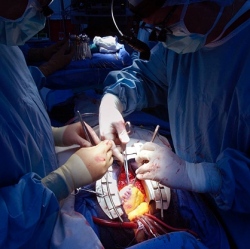
The advance, successful development and analysis of a liver human organ construct that responds to exposure to a toxic chemical much like a real liver, was described in a presentation by John Wikswo, Director of the Vanderbilt Institute for Integrative Biosystems Research and Education.
The achievement is the first result from a five-year, $19 million multi-institutional effort led by Rashi Iyer, Senior Scientist at Los Alamos National Laboratory (LANL), and Wikswo.
The project is developing four interconnected human organ constructs, liver, heart, lung and kidney, that are based on a highly miniaturized platform nicknamed ATHENA (Advanced Tissue-engineered Human Ectypal Network Analyzer).
The project is supported by the Defense Threat Reduction Agency. Similar programs to create smaller “organs-on-chips” are underway at the Defense Advanced Research Projects Agency and the National Institutes of Health.
“The original impetus for this research comes from the problems we are having in developing new drugs,” said Wikswo. “A number of promising new drugs that looked good in conventional cell culture and animal trials have failed when they were tested in humans, many due to toxic effects. That represents more than $1 billion in effort down the drain. Our current process of testing first in cell lines on plastic and then in mice, rats and other animals simply isn’t working.”
In recent years, a cadre of scientists and clinicians around the world has begun to develop more relevant and advanced laboratory tests for drug efficacy and toxicity: small bioreactors that can form human organ structures and are equipped with sensors to monitor organ health.
